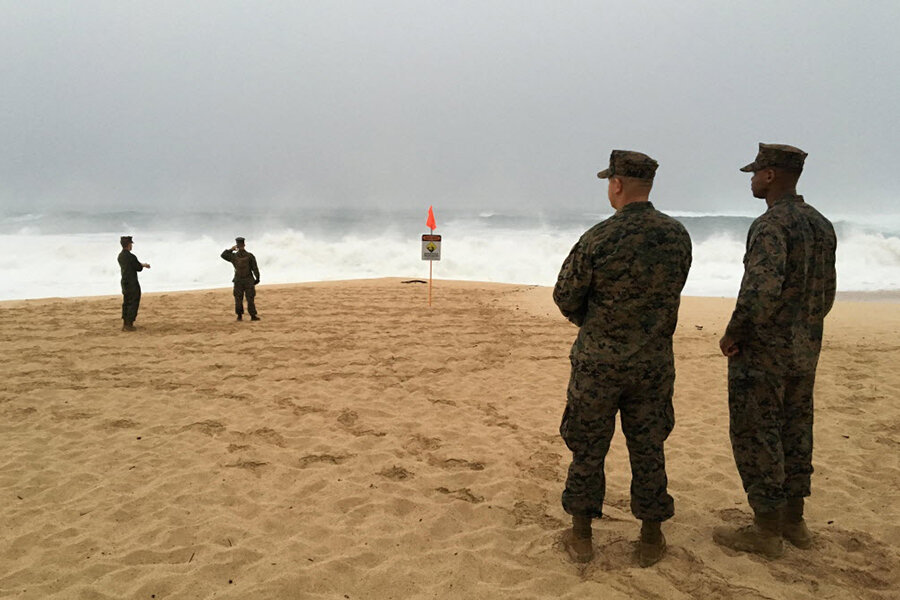High surf complicating Hawaii search for missing Marines
Loading...
| Haleiwa, Hawaii
The high surf warning that has complicated the search for 12 Marines who are missing after two helicopters crashed off Hawaii was expected to persist Sunday.
The waves dispersed the debris and complicated the search, which was expanded to include waters off Oahu's west coast. "It makes finding things incredibly difficult," Coast Guard spokesman Lt. Scott Carr said.
Rescuers battled waves up to 30 feet Saturday, but winds decreased to about 10 mph.
The US Marines Corp released the names of the 12 missing crew members late Saturday. Though based in Hawaii, the Marines were from various states.
The Coast Guard was notified late Thursday of the crash by a civilian who saw the aircraft flying then disappear and a fireball. Someone else reported a flare in the sky, Lt. Carr said. It was not clear if the fireball and the flare were the same.
The Marines were alerted when the CH-53E helicopters carrying six crew members each failed to return to their base at Kaneohe Bay following a nighttime training mission. Hours later, a Coast Guard helicopter and C-130 airplane spotted debris 2 1/2 miles off of Oahu.
A Navy P-3 airplane was scouring the ocean, along with helicopters from the Coast Guard, Army, Navy, and Honolulu police and fire departments. Two Navy warships and two Coast Guard cutters were on the scene. Honolulu lifeguards on personal watercraft were also looking.
The Coast Guard was keeping people out of a wide zone that spanned about 30 miles of shoreline, citing danger from debris. The zone extended from the shore to 8 miles off the coast.
National Weather Service meteorologist Derek Wroe said Saturday that the surf peaked Friday afternoon and was slowly declining.
A storm about 1,500 miles to the north and northwest of Oahu was sending large swells to the islands, he said.
The transport helicopters were part of the 1st Marine Aircraft Wing at Marine Corps Base Hawaii. Known as Super Stallions, they are the US military's largest helicopter, capable of carrying a light armored vehicle, 16 tons of cargo, or a team of combat-equipped Marines, according to a Marine Corps website.
The Coast Guard initially reported that the choppers had collided, but Marine Capt. Timothy Irish said Friday that he did not know if the accident was a collision.
The helicopters normally carry four crew members, but this particular flight also carried one or two instructor trainers, Capt. Irish said. He did not know if they were teaching the crew or just observing.







